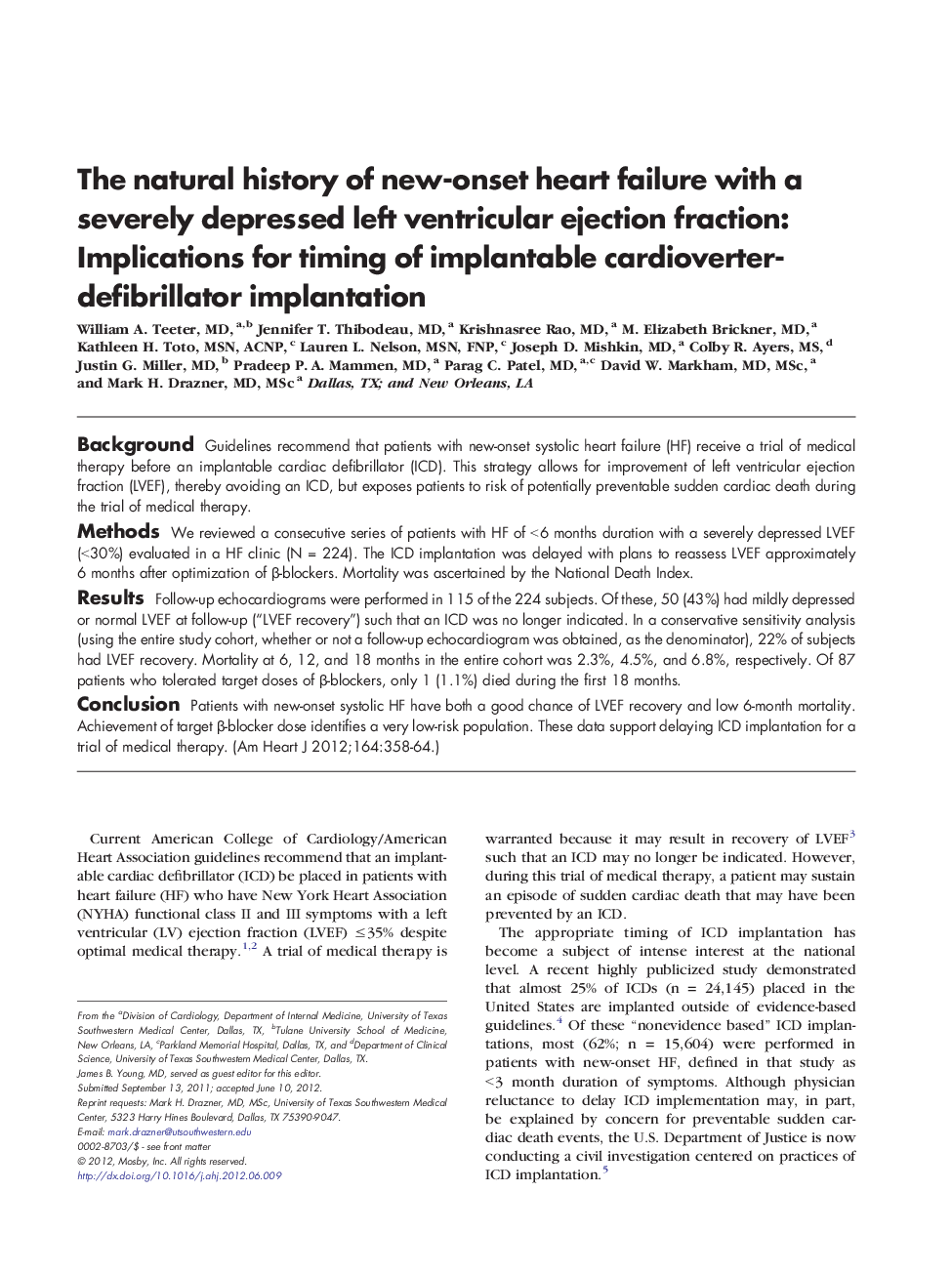| Article ID | Journal | Published Year | Pages | File Type |
|---|---|---|---|---|
| 2850729 | American Heart Journal | 2012 | 7 Pages |
BackgroundGuidelines recommend that patients with new-onset systolic heart failure (HF) receive a trial of medical therapy before an implantable cardiac defibrillator (ICD). This strategy allows for improvement of left ventricular ejection fraction (LVEF), thereby avoiding an ICD, but exposes patients to risk of potentially preventable sudden cardiac death during the trial of medical therapy.MethodsWe reviewed a consecutive series of patients with HF of < 6 months duration with a severely depressed LVEF (< 30%) evaluated in a HF clinic (N = 224). The ICD implantation was delayed with plans to reassess LVEF approximately 6 months after optimization of β-blockers. Mortality was ascertained by the National Death Index.ResultsFollow-up echocardiograms were performed in 115 of the 224 subjects. Of these, 50 (43%) had mildly depressed or normal LVEF at follow-up (“LVEF recovery”) such that an ICD was no longer indicated. In a conservative sensitivity analysis (using the entire study cohort, whether or not a follow-up echocardiogram was obtained, as the denominator), 22% of subjects had LVEF recovery. Mortality at 6, 12, and 18 months in the entire cohort was 2.3%, 4.5%, and 6.8%, respectively. Of 87 patients who tolerated target doses of β-blockers, only 1 (1.1%) died during the first 18 months.ConclusionPatients with new-onset systolic HF have both a good chance of LVEF recovery and low 6-month mortality. Achievement of target β-blocker dose identifies a very low-risk population. These data support delaying ICD implantation for a trial of medical therapy.
